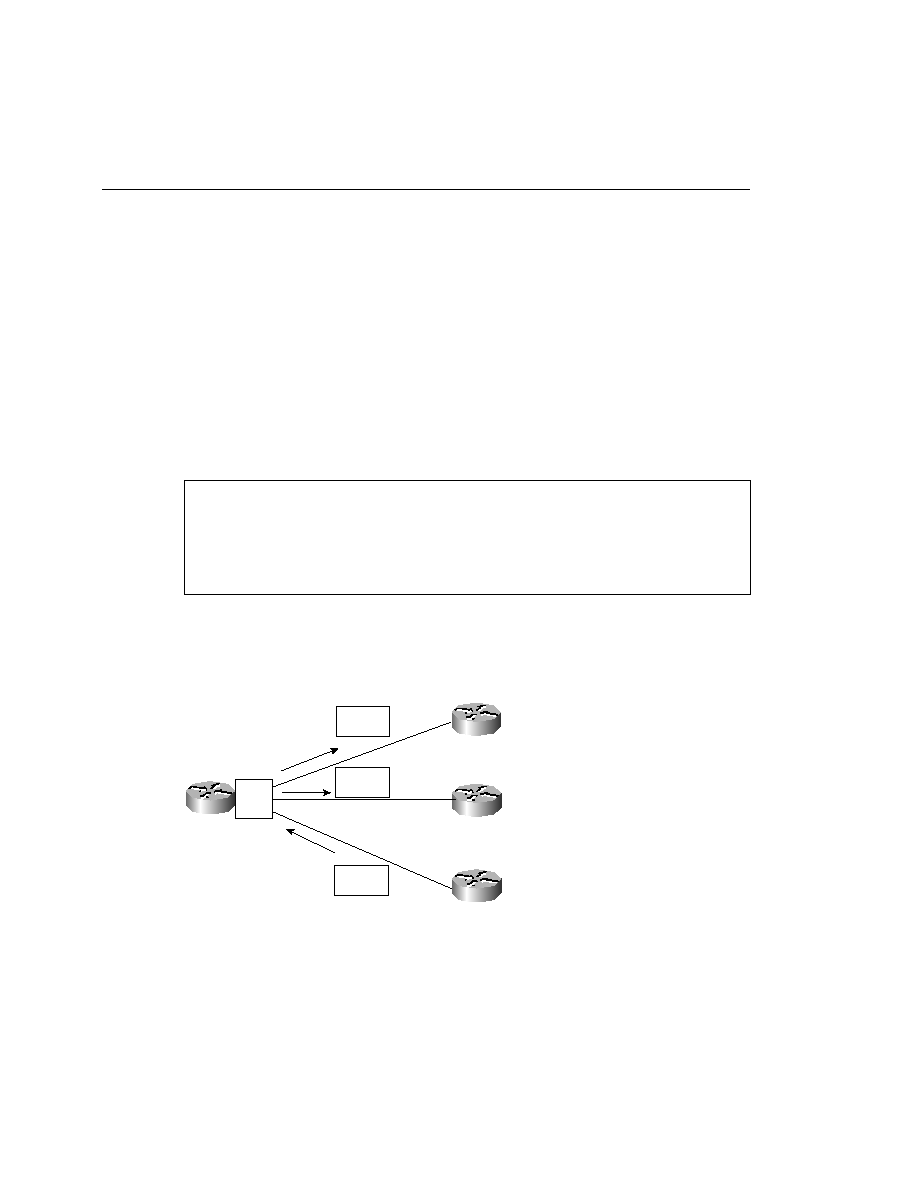
The limit lies in the number of Interface Descriptor Blocks (IDBs) available to the router. This
number varies depending on the router series and Cisco IOS Software release.
configured for multiple protocols, shut down, or anything else common on other interfaces with
one notable exception--you cannot set encapsulation on a subinterface. Encapsulation must be
defined at the major interface.
interfaces where before existed only one physical interface. Split horizon has no problem with
updates leaving through interfaces other than the one through which they were received.
Example 9-1 shows the necessary commands for creating a subinterface.
implemented.
trade-off. In exchange for the proper function of split horizon as well as the passing of routing
updates, additional subnets are necessary. In addition, each interface has to have its own unique
subnet, no matter which protocol(s) are configured.
RouterA(config-if)#encapsulation frame-relay
RouterA(config-if)#interface serial 0.1 point-to-point
RouterA(config-subif)#ip address 10.1.1.1 255.255.255.0
RouterA(config-subif)#interface serial 0.2 point-to-point
RouterA(config-subif)#ip address 10.1.2.1 255.255.255.0
RouterA(config-subif)#interface serial 0.3 point-to-point
RouterA(config-subif)#ip address 10.1.3.1 255.255.255.0
S0.2
S0.3